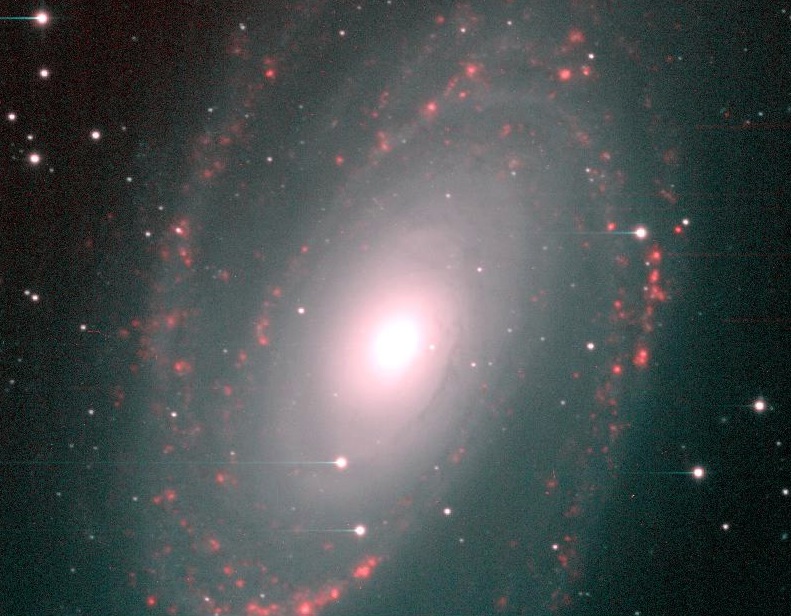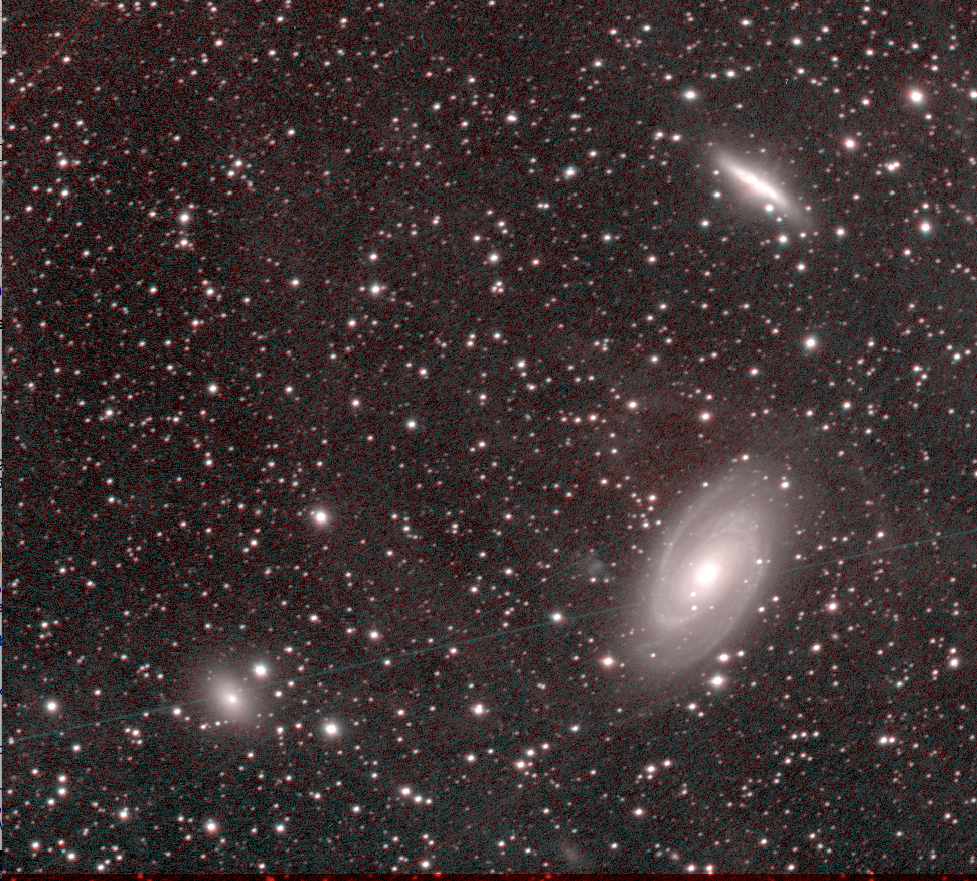 |
 |
 |
 |
 |
 |
| X-ray | Ultraviolet | Visible | Near-Infrared | Far-Infrared | Radio continuum |
Each thumbnail image is linked to a full-sized version with its own caption.
 |
 |
 |
 |
 |
 |
| X-ray | Ultraviolet | Visible | Near-Infrared | Far-Infrared | Radio continuum |
A more ordinary optical view is this one fro the SARA 1-meter telescope at Kitt Peak. Hα emission, mostly from star-forming regions, is shown in red,

M81 is interacting with M82, with a huge connecting envelope of neutral hydrogen; this interaction, with NGC 3077 as a co-cospirator, is also very likely responsible for triggering the beautiful grand-design spiral pattern that makes M81 such a favorite. The gr composite image below, from the University of Alabama Crimson Dragon wide-field system, shows M81, M82, their neighbor NGC 3077, and some dwarf companions. Additional faint light across the field comes not from the M81 group but dust ("cirrus") in our own galaxy, forming what is sometimes called an integrated-flux nebula.

New added attraction: M81 and the asteroid!
Last changes: 9/2018 © 2001-2018